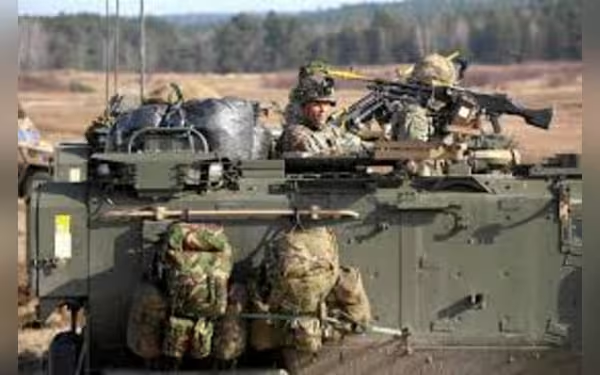Saturday, November 16, 2024 07:57 PM
NATO Prepares for Troop Evacuations Amid Rising Tensions with Russia
- NATO enhances logistics for potential troop evacuations.
- Medical evacuation strategies differ from past conflicts.
- Alternative transport methods are being considered for injured soldiers.
 Image Credits: thefrontierpost
Image Credits: thefrontierpostNATO is enhancing its logistics and medical evacuation strategies in preparation for potential conflicts with Russia.
NATO, the North Atlantic Treaty Organization, is taking significant steps to prepare for potential conflicts, particularly in light of rising tensions with Russia. As the geopolitical landscape evolves, the alliance is focusing on how to effectively transport wounded soldiers from the frontlines in the event of a war. This planning is crucial, especially since air evacuations may not always be a viable option due to the nature of modern warfare.
Lieutenant-General Alexander Sollfrank, who leads NATO’s logistics command, has highlighted that the medical evacuation strategies for a potential conflict with Russia will differ greatly from those used in previous operations in Afghanistan and Iraq. In a war scenario with Russia, NATO forces could face a much larger battlefield, resulting in a higher number of casualties and challenges in maintaining air superiority near the frontlines.
“The challenge will be to swiftly ensure high-quality care for, in the worst case, a great number of wounded,” Sollfrank stated. However, he did not disclose specific numbers regarding the expected casualties. This uncertainty underscores the seriousness of the situation and the need for comprehensive planning.
NATO's preparations are part of a broader initiative to enhance its deterrence and defense capabilities, especially following Russia's invasion of Ukraine in 2022. The German military has even projected that Russia could potentially launch an attack on a NATO member by 2029, which adds urgency to these preparations.
In this context, Sollfrank's command, known as the Joint Support and Enabling Command (JSEC), is responsible for coordinating the movement of troops and equipment across Europe. Recently, JSEC conducted an exercise focused on managing patient flows, which is essential for ensuring that wounded soldiers receive timely medical attention.
One of the key challenges identified is the need for alternative transport methods for injured troops. Sollfrank noted that Russian air defenses could pose significant threats to medical evacuation flights, making it necessary to consider options like hospital trains. These trains can transport more casualties simultaneously compared to aircraft, which is a critical factor in a large-scale conflict.
“Air superiority will have to be achieved in the first place. It will require time to succeed over the entire length and depth of the front line,” Sollfrank explained. This highlights the complexity of modern warfare logistics, where every detail matters in saving lives.
Another hurdle in this planning process is the differing medical regulations among NATO member countries. To address this, Sollfrank suggested the idea of a “military medical Schengen,” similar to the political Schengen zone in Europe. This would allow for the free movement of essential medical supplies, such as strong painkillers and narcotics, which are crucial for treating wounded soldiers but are often subject to strict cross-border regulations.
NATO's proactive approach to preparing for potential conflicts with Russia reflects the seriousness of the current geopolitical climate. By focusing on logistics and medical evacuations, the alliance aims to ensure that its forces are ready to respond effectively in the face of adversity. As tensions continue to rise, the importance of such preparations cannot be overstated, as they play a vital role in safeguarding the lives of those who serve in defense of their nations.













